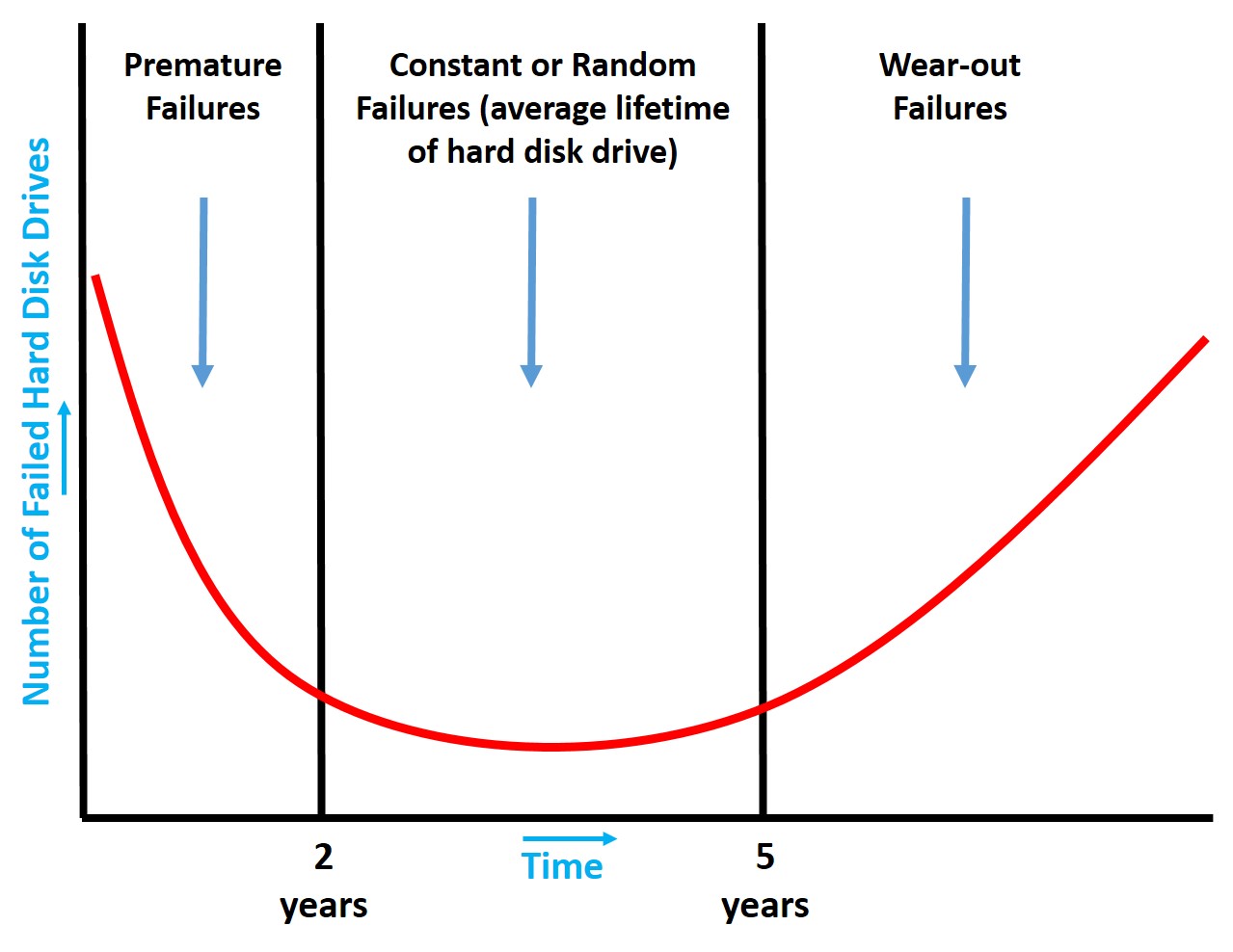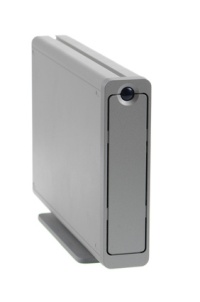- Home
- Hard Drives
- Hard Drive Backup
Hard Drive Backup
A hard drive backup of the hard disk in your computer is a critical component to ensuring the preservation of digital information stored on the hard drive.
Hard disk drives are wonderful for storing digital scrapbooking projects and any other digital files. They provide fast random access to information and very high storage capacity at an economical price. However, the one shortcoming of hard drives is unpredictable failures. This is not unusual as all storage media will fail at one point or another, but for hard drives failure means the loss of hundreds of GBs of often irreplaceable information. A hard drive backup will prevent the loss of this valuable data.
Hard Disk Drive Failure Pattern
Hard drives contain rigid disks inside of a case. Mechanical parts reside within the case and like all mechanical parts, failure can occur. The diagram below can represent the lifetime or longevity of hard disk drives.

Some hard disk drives will fail early in their lifetime such as within a few weeks or a couple of months of use. This is often due to manufacturing defects. On the diagram, the section called premature failures represents this. This is likely the lifetime area many cheap hard drives will fall in. A large portion of hard drives are usable without problems for a 2 to 5-year period, which is the average lifetime range of most hard disk drives. This is the period failures are more constant or random in nature. As shown in the graph, this is the time where failures are at their lowest.
Finally, at the tail end of the 2 to 5-year period, more and more failures occur as time goes on and as the hard drives begin to wear out. This is the general pattern of failure if no other forces are responsible for the failure such as exposure of the computer and/or hard drive to physical damage.
One thing to keep in mind is that at any time, hard disk drives can fail and often without warning. One day the computer is working and there is no problem accessing the files and the next day maybe not. Therefore, the backup hard drive issue is important.
Hard Drive Backup with External Hard Drive
There are several ways of performing a hard drive backup. One method is to save everything on the hard drive as is. Due to the large size of modern day hard drives, the easiest and most convenient way to do this is with another hard drive, typically an external hard drive with a USB or Firewire connection. (Using multiples of lower capacity formats such as CDs and DVDs simply does not make sense for this method because the computer backup would require many discs.) Large capacity external hard drives are very inexpensive these days. Of course, the external hard drive capacity should be greater than the hard drive being backed up.

LTO Tape Backup of Hard Drives
Another complete hard drive backup method is to use high capacity data tape such as LTO. This requires a tape drive which costs two to three thousand dollars for the most recent version. The computer would also need to have a SCSI connection and therefore, a possible need to purchase a special card for compatibility with the computer. For home use, the computer backup hard drive on tape is not feasible.
SAN and NAS Storage
Other options such as SAN (storage area network) or NAS (network attached storage) are available, but only implemented when very large amounts of data require storage or backing up. Note that another drawback of backing up the complete hard drive is the time required to save such a large amount of information.
Selective File Backup
A more plausible strategy for hard drive backup in the home environment is to select which information is most important. This is usually digital video from camcorders, digital audio, digital photos, emails, financial records, and various text files. By keeping these types of files properly organized on the computer, hard disk backup is relatively easy. This computer backup hard drive scenario requires much less storage space and therefore a wider range of backup storage media can be used such as external hard drives and recordable or erasable CDs, DVDs, or Blu Rays.
There are also off-site storage options for computer backup, where a company will store your information on their servers. Transferring of the information occurs through an internet connection. It would be a good idea to verify how secure your data are with the chosen company and what would happen to your information should the company go out of business.
Perform Regular Hard Drive Backups
Finally, a hard drive computer backup should be scheduled regularly. The media on which the backup hard drive information exists should not reside next to the computer. Instead, storage in a different building is ideal, but this is not always practical. However, at minimum, the hard drive backup should at least be in a separate location of the same building, as far away from the computer as possible. Another option is to store regular computer backups in a separate location in the house and periodic backups in a different building.
Safeguard your digital scrapbooking projects and other precious digital memories by implementing proper hard disk backup procedures.